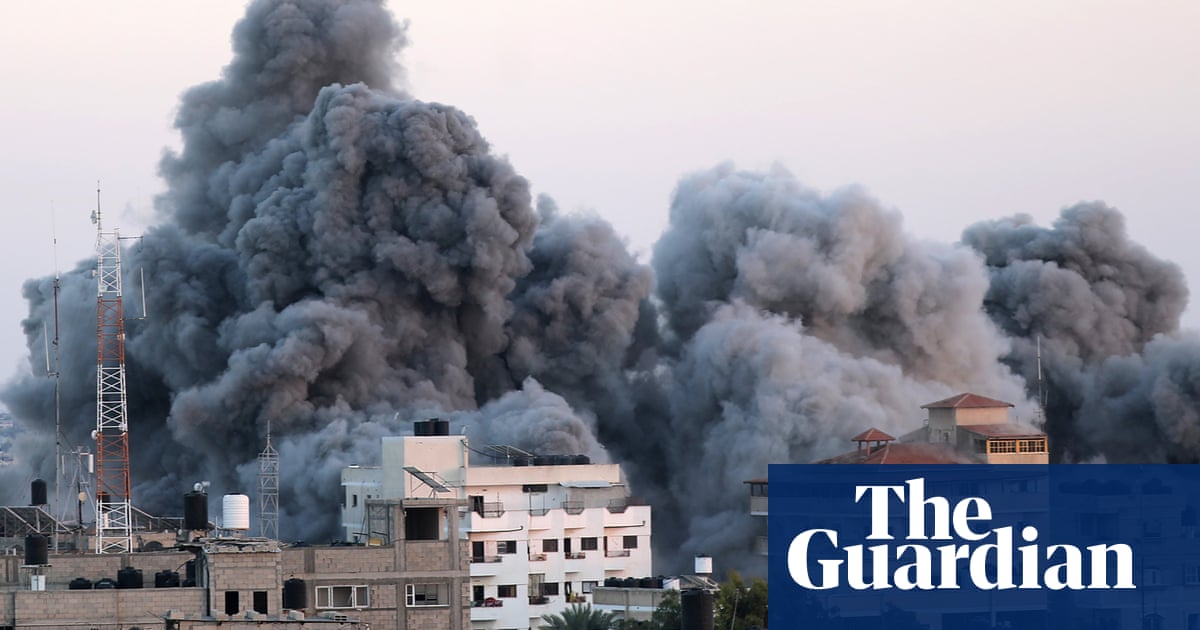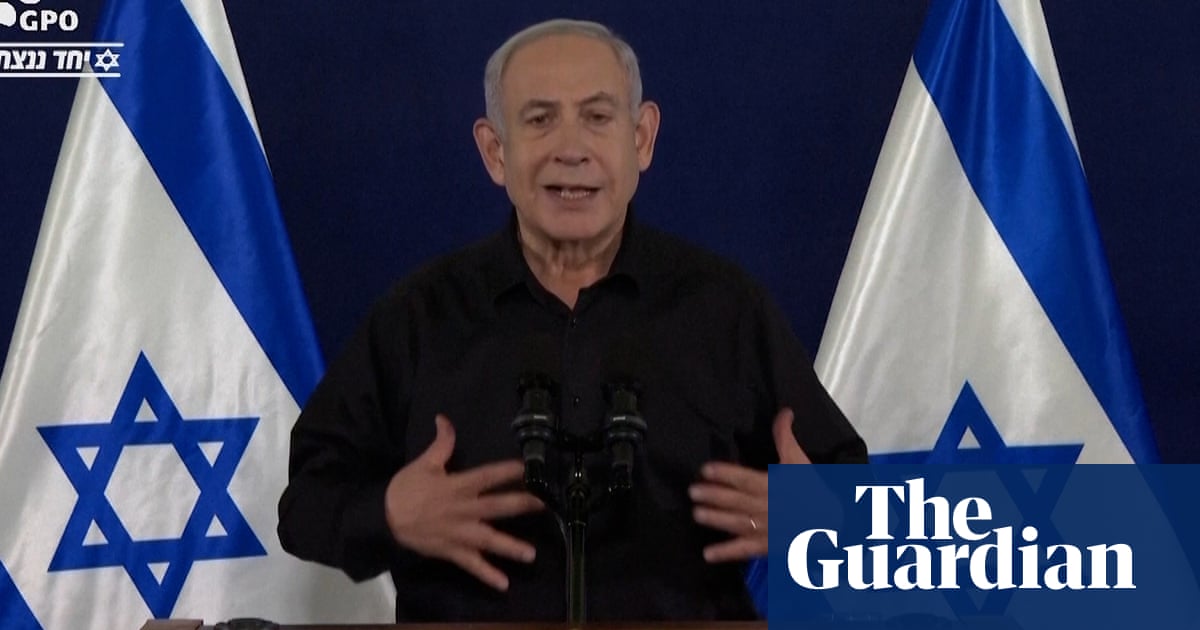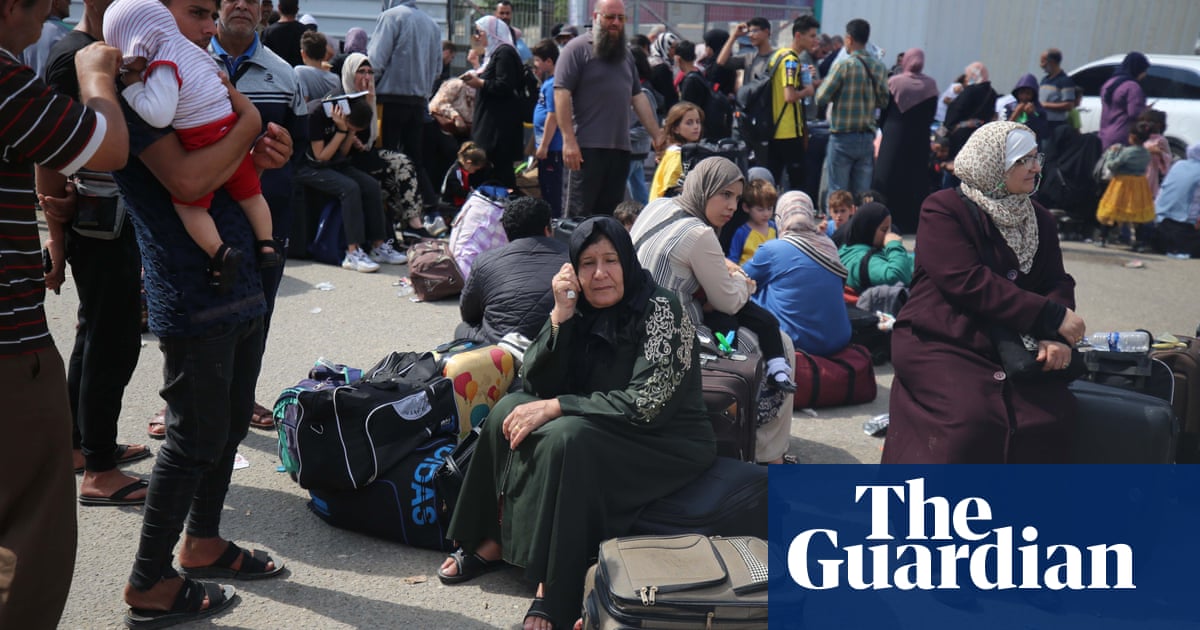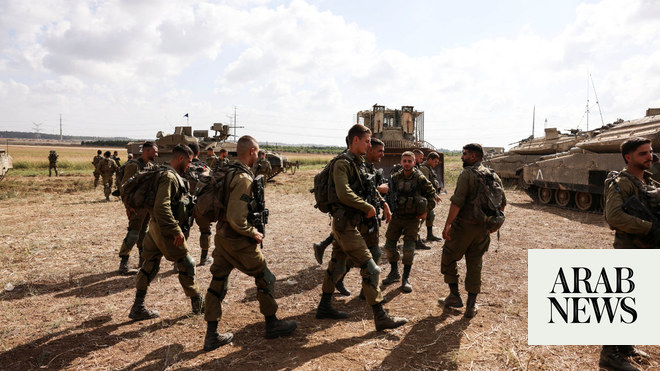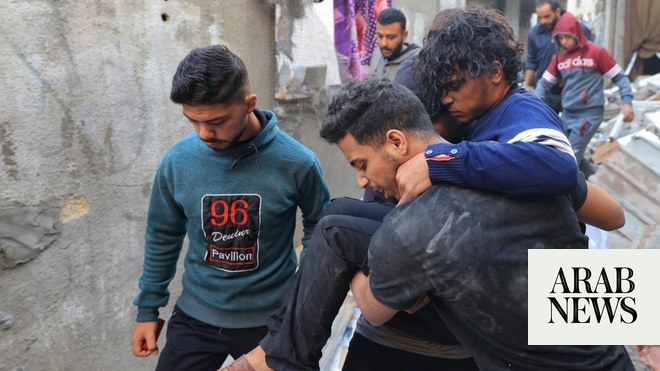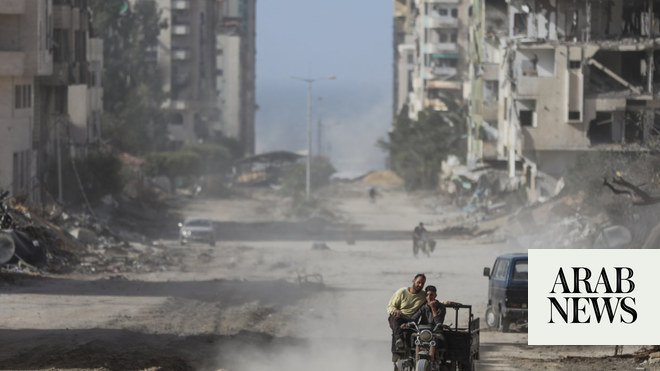
Israel has signalled that it is preparing to launch a ground assault in southern Gaza in a significant escalation of the war, as it attacked the Strip on Friday after the end of a seven-day truce, leaving at least 178 Palestinians dead.
The country’s military dropped leaflets in parts of Khan Younis, where Israel believes Hamas’s leadership is based, warning citizens to evacuate farther south to Rafah, prompting humanitarian groups to say that Palestinians risked being forced completely out of the territory.
The resumption of hostilities came as the Israeli prime minister, Benjamin Netanyahu, appeared to brush aside US calls to pursue a more restrained military campaign after the humanitarian pause in the fighting came to an end.
Netanyahu said his country’s forces were now “charging forward” and that the plan was for a total military victory. “We continue to fight with all our strength until we achieve all our goals: the return of all our abductees, the elimination of Hamas, and the promise that Gaza will never be a threat to Israel again,” he said.
The leaflets dropped by the IDF declared that Khan Younis, which was previously attacked less heavily than the north of Gaza, was now a “dangerous combat zone”. The city was almost bombed from the air immediately after the truce broke down at about 7am.
Israel’s revised plan is to divide Gaza into dozens of small districts, and to demand that civilians conduct localised evacuations in Khan Younis and elsewhere in the south, before attacking with air power, artillery and ground troops.
The leaflets came with a QR code which linked to an Israeli military website, mapping the numbered areas and telling residents in Arabic to “track and follow the instructions of the IDF” if they are evacuated.
Rohan Talbot, the Medical Aid for Palestinians advocacy director, likened the new strategy to a macabre game of Battleships: “Communications are increasingly difficult and this map is not going to provide Palestinians with the protections that are their right under international law. It is more akin to a macabre game of battleships in which terrified civilians will be left guessing which square will save their life.”
Humanitarian groups said the Israeli warnings would be insufficient because Palestinians were running out of places to evacuate to. “There is fundamentally nowhere for people to go,” said Danila Zizi, the Palestine country manager for the charity Humanity & Inclusion.
The White House blamed Hamas for the breakdown of the ceasefire, saying it had failed to produce a new list of hostages to be released. The national security spokesperson, John Kirby, cast doubt on Hamas’s claims to have run out of women and children to exchange.
“You have to take with an immense grain of salt anything that Hamas says,” Kirby said. “We think it’s more than plausible that they have additional women and children, who could and should qualify for an exchange.”
He added that Joe Biden and top US officials were “deeply engaged” in restoring the ceasefire.
Amid growing signs the US is prepared to publicly distance itself from some of the Israeli government’s actions, US officials briefed that US visas were to be withdrawn in the next few weeks from people deemed to be involved in settler violence on the West Bank, a measure Joe Biden threatened to use last month. Officials have also been asked to examine any tax breaks given to US organisations that fund Israeli groups supporting the expansion of illegal settlements.
In a difficult meeting on Thursday, before the collapse of the ceasefire on Friday morning, Antony Blinken clashed with the Israeli cabinet over its military tactics, levels of international support and plans for future governance in Gaza. The US secretary of state insisted the level of civilian casualties had to be reduced in any resumed assault, and that Israel had to share its long-term objectives for Gaza with moderate Arab states.
Israel launched more than 200 strikes across the Gaza Strip on Friday, including in the densely populated south, where many civilians have fled. The Hamas-controlled health ministry said 178 civilians had been killed since the ceasefire ended.
The scale of the bombardment underscored the extent to which Blinken had left Israel largely empty-handed. Conferring with Arab foreign ministers on Friday in Dubai on the sidelines of the UN climate change conference, he came under pressure to do more to distance the US from Israel, but the administration remains committed to Israel’s elimination of Hamas, and feels it can only influence – not direct – Israel’s tactics.
Blinken later said that the US would be paying close attention to Israeli efforts to reduce civilian casualties: “We saw Israel take steps today to get information to people about where safe areas are, how they can get out of harm’s way … This is going to be very important going forward, and it’s something we’re going to be looking at very closely.”
At the White House, Kirby would not say whether Israel’s resumed military operations on Friday conformed with the US demands to reduce civilian casualties:
“What I can tell you is that we have been clear and consistent since the very beginning about the need to abide by the law of war and to minimise civilian casualties, and to do everything that you can in targeting to make it precise, deliberate, cautious and careful.”
The UN secretary general, António Guterres, said: “I deeply regret that military operations have started again in Gaza. I still hope that it will be possible to renew the pause that was established.” Other UN agencies spoke of Gaza turning into a horror movie, saying disease was now likely to spread across the territory.
Blinken, sensing a loss of international support for Israel’s tactics, had privately told the Israeli cabinet it was wrong to think international political support for the offensive could be sustained for the months-long military campaign envisaged by some in the Israeli military.
Netanyahu also spurned a US plan for a revitalised Palestinian Authority to provide governance in Gaza and the West Bank in the medium term, saying: “As long as I’m sitting in this chair, the Palestinian Authority, which supports, educates and finances terror, will not rule Gaza on the day after Hamas.” His aides have been briefing that Israel will set up a buffer zone inside Gaza to prevent further attacks by Hamas, a move that would reduce Palestinian territory.
At a press conference held on Thursday in the knowledge that his efforts to extend the ceasefire were on the brink of failure, Blinken echoed the message he had delivered more bluntly in private, saying: “Israel has one of the most sophisticated militaries in the world. It is capable of neutralising the threat posed by Hamas while minimising harm to innocent men, women, and children. And it has an obligation to do so
“The imperative to the United States is that the massive loss of civilian life and displacement of the scale we saw in northern Gaza not be repeated in the south.” He said the issue was not whether Israel intended to harm civilians, but whether they were being harmed.
He had also called for humanitarian civilian protection plans that “clearly and precisely designating areas and places in southern and central Gaza where [civilians] can be safe and out of the line of fire”.
In what appeared to be an effort to meet Blinken’s objectives, the Israeli military issued an online interactive map splitting Gaza into 2,376 different numbered zones. A leaflet dropped into parts of Gaza by the Israeli defence ministry contained a QR code allowing the population to access the map. The Israelis believe advice can then be issued by an unspecified means to the population to avoid numbered zones if Israel intends to turn them into a combat zone.
With telecommunications down, aid agencies said the plan was impractical and bore no relation to reality.
The White House confirmed that Israel had stopped the flow of aid into Gaza through the Rafah crossing from Egypt at the same time as ending the ceasefire, but Kirby said on Friday afternoon that the Israeli government had announced a partial reopening.
“They have reduced the kind of aid that’s going to be allowed in and it’s probably in terms of dozens of trucks versus hundreds of trucks, but that’s a good sign,” he said.
On Thursday, Blinken said: “Sustaining and increasing the flow of humanitarian aid, in particular fuel, restocking stores with commercial goods – these are vital to the lives and livelihoods and wellbeing of men, women, and children.” He added: “The government of Israel agrees with the imperative of humanitarian assistance and the need to sustain it.”
Rob Holden, a World Health Organization senior emergency officer speaking from Gaza, said: “The healthcare service is on its knees”
He said he and other WHO staff had in recent days visited the al-Ahli hospital in Gaza City. “It is like a horror movie,” he said via video-link, adding patients covered the floor “with the most traumatic injuries that you can imagine”. Holden said: “There is no standing room. The floor is just awash with blood and patients lying waiting to receive life-saving care.”




